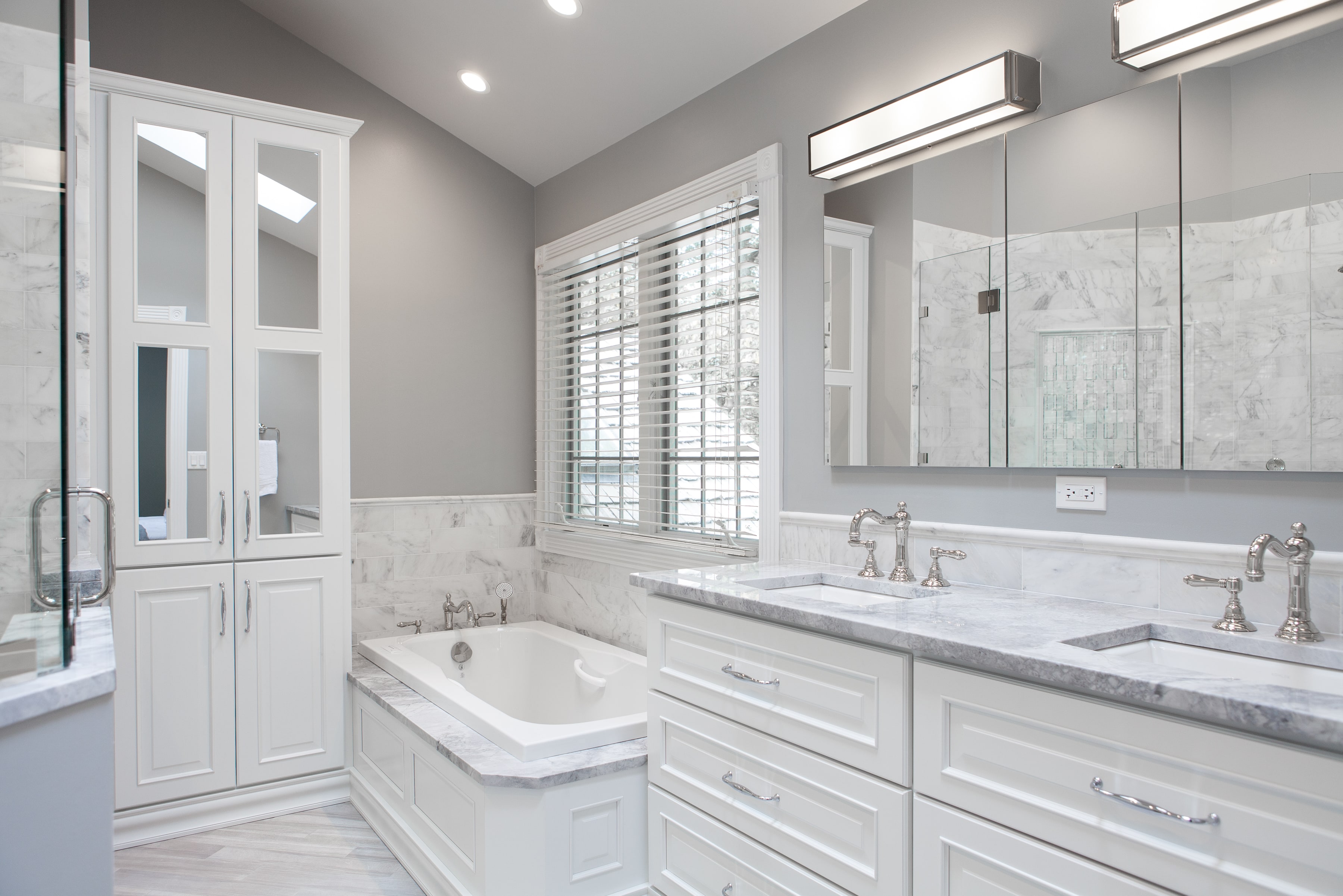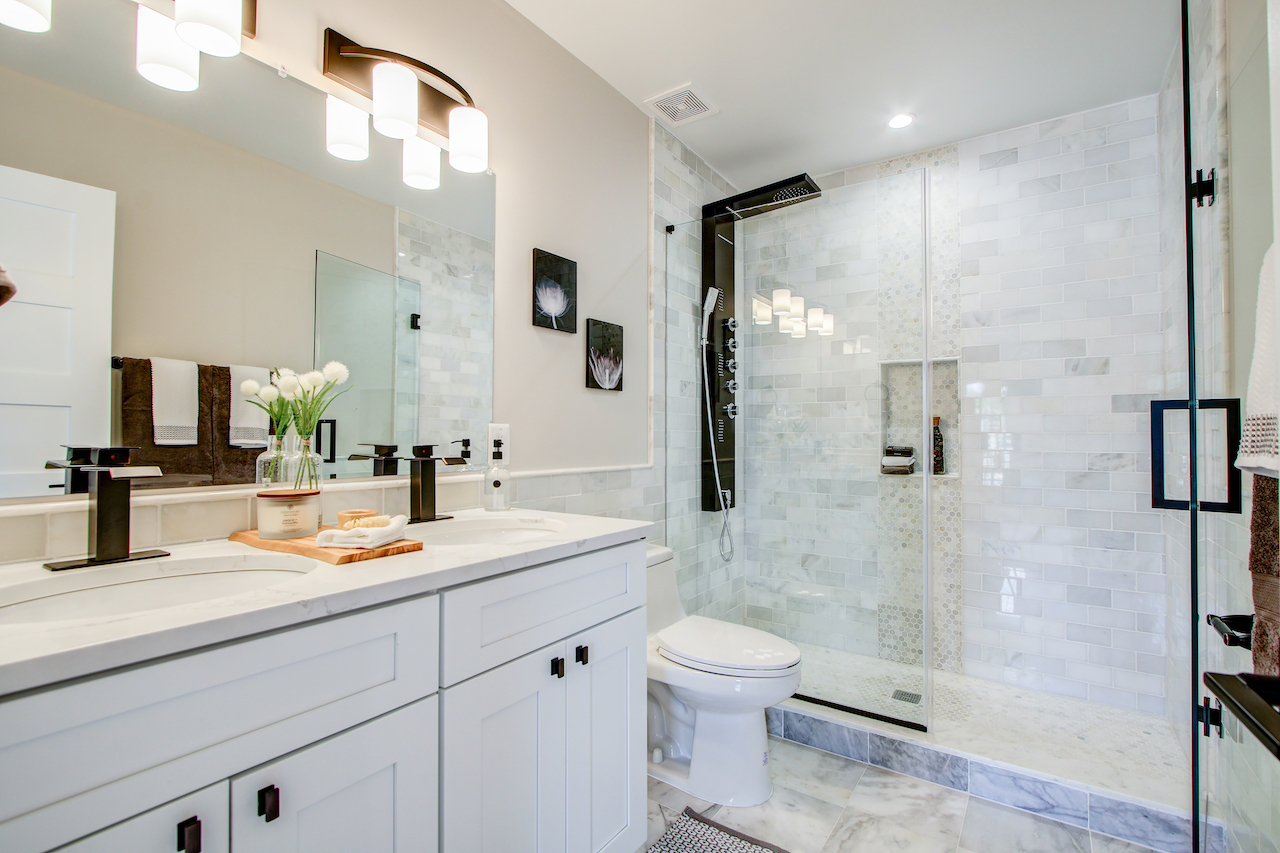Factors Affecting Renovation Time: How Long To Renovate Small Bathroom

The duration of a small bathroom renovation project can vary significantly depending on several factors. Understanding these factors can help you set realistic expectations and plan your project accordingly.
Existing Bathroom Condition
The condition of your existing bathroom plays a crucial role in determining the renovation timeline. If your bathroom is in good condition, with minimal damage or outdated features, the renovation process will likely be faster. Conversely, a bathroom with extensive water damage, structural issues, or outdated plumbing and electrical systems will require more time for repairs and replacements. For instance, if the bathroom has asbestos-containing materials, such as old tiles or insulation, the removal process can be lengthy and require specialized contractors, adding weeks to the project timeline.
Scope of Renovation
The scope of your renovation project is another significant factor. A simple update involving replacing fixtures, painting walls, and installing new flooring will take less time than a complete overhaul, which includes replacing plumbing, electrical wiring, and even expanding the bathroom space. For example, a simple update might take 2-3 weeks, while a complete overhaul could take 4-6 weeks or even longer, depending on the complexity of the work.
Material Choices
The materials you choose for your bathroom renovation can also impact the timeline. Some materials, such as custom-made cabinets or unique tiles, may require longer lead times for manufacturing and delivery. For example, if you choose to install a custom-made shower enclosure, the fabrication and installation process could take several weeks, adding to the overall project duration.
Accessibility Requirements
If your renovation project involves incorporating accessibility features, such as wheelchair accessibility or grab bars, it will require additional time for planning, design, and installation. ADA compliance standards need to be met, which may involve specialized contractors and inspections, potentially extending the project timeline. For example, installing a walk-in shower with ADA-compliant features might require extra time for planning and installation, adding a few weeks to the overall renovation schedule.
Permits and Inspections
Obtaining permits and scheduling inspections can also impact the renovation timeline. The time it takes to get permits varies depending on the location and the scope of the project. Similarly, inspections can be scheduled based on availability, which could lead to delays if the inspector is not available on time. For instance, in some areas, obtaining permits for plumbing and electrical work might take a few weeks, and inspections could add another week or two to the overall project duration.
Typical Renovation Phases

A small bathroom renovation typically involves a series of distinct phases, each with its own set of tasks and potential challenges. Understanding these phases and their estimated timeframes can help you plan your project effectively and manage your expectations.
Demolition, How long to renovate small bathroom
Demolition is the initial stage of the renovation process, where existing fixtures, finishes, and structures are removed to make way for the new design. This phase involves tasks such as:
- Removing old tiles, flooring, and countertops.
- Disconnecting and removing plumbing fixtures, such as sinks, toilets, and showers.
- Removing old cabinets, vanities, and mirrors.
- Removing any damaged or outdated walls or partitions.
How long to renovate small bathroom – The demolition phase is crucial for preparing the space for the new construction and ensuring a clean slate for the subsequent stages.
Plumbing
The plumbing phase focuses on installing new plumbing fixtures and ensuring the proper flow of water and waste. This phase involves tasks such as:
- Installing new water supply lines and drain pipes.
- Installing new sinks, toilets, and showers.
- Connecting plumbing fixtures to the water supply and drainage systems.
- Testing the plumbing system for leaks and proper functionality.
Proper plumbing installation is critical for a functional and safe bathroom, so it’s important to hire a qualified plumber to handle this phase.
Electrical
The electrical phase involves installing new wiring and fixtures to power the bathroom’s lighting, ventilation, and appliances. This phase involves tasks such as:
- Running new electrical wiring for lighting, fans, and outlets.
- Installing new light fixtures, switches, and outlets.
- Connecting electrical fixtures to the power supply.
- Testing the electrical system for safety and functionality.
It’s essential to ensure that all electrical work is done by a licensed electrician to meet safety standards and prevent potential hazards.
Framing
The framing phase involves building the structural framework of the bathroom, including walls, partitions, and ceilings. This phase involves tasks such as:
- Building new walls and partitions using wood or metal studs.
- Installing new ceiling joists or drywall.
- Creating openings for doors and windows.
- Installing insulation and vapor barriers to improve energy efficiency.
Proper framing is crucial for the stability and functionality of the bathroom, so it’s essential to hire a skilled carpenter or contractor to handle this phase.
Tiling
The tiling phase involves installing new tiles on the walls, floors, and shower areas. This phase involves tasks such as:
- Preparing the surfaces for tiling, including leveling and waterproofing.
- Installing tiles using mortar or adhesive.
- Grouting the tiles to create a finished look and prevent water infiltration.
- Installing tile trim and moldings for a polished finish.
Tiling can be a time-consuming process, especially for larger bathrooms, and requires careful attention to detail to ensure a professional finish.
Finishing
The finishing phase involves the final touches that complete the bathroom renovation, including painting, installing fixtures, and adding decorative elements. This phase involves tasks such as:
- Painting the walls and ceilings.
- Installing new vanities, mirrors, and cabinets.
- Installing shower doors and enclosures.
- Adding decorative elements, such as towel bars, toilet paper holders, and soap dishes.
The finishing phase is the final step in transforming the bathroom into a functional and aesthetically pleasing space.
Timeframes and Potential Delays
| Phase | Typical Duration | Potential Delays | Mitigation Strategies |
|---|---|---|---|
| Demolition | 1-3 days | Unexpected asbestos or lead paint | Hire a qualified contractor for asbestos or lead paint removal. |
| Plumbing | 3-5 days | Hidden pipes or structural issues | Consult with a plumber before demolition to identify potential issues. |
| Electrical | 2-4 days | Outdated wiring or insufficient capacity | Hire a licensed electrician to assess and upgrade electrical systems. |
| Framing | 5-7 days | Complex framing designs or structural modifications | Consult with a skilled carpenter or contractor for complex framing projects. |
| Tiling | 7-10 days | Uneven surfaces or complex tile patterns | Ensure proper surface preparation and hire experienced tilers for complex designs. |
| Finishing | 5-7 days | Delayed delivery of fixtures or materials | Order fixtures and materials well in advance to avoid delays. |
Renovating a small bathroom can take anywhere from a few weeks to a few months, depending on the scope of the project. One key factor is maximizing space, and a small bathroom counter organizer can be a game-changer. By keeping surfaces tidy, you’ll not only create a more inviting space, but also make the renovation process smoother, as you’ll have less clutter to work around.
Renovating a small bathroom can take anywhere from a few weeks to a few months, depending on the scope of the project. If you’re looking for inspiration for your small bathroom, consider incorporating elements of small bohemian bathroom decor , which can create a sense of warmth and relaxation.
Regardless of your style, remember that careful planning and efficient execution are key to completing your small bathroom renovation in a timely manner.